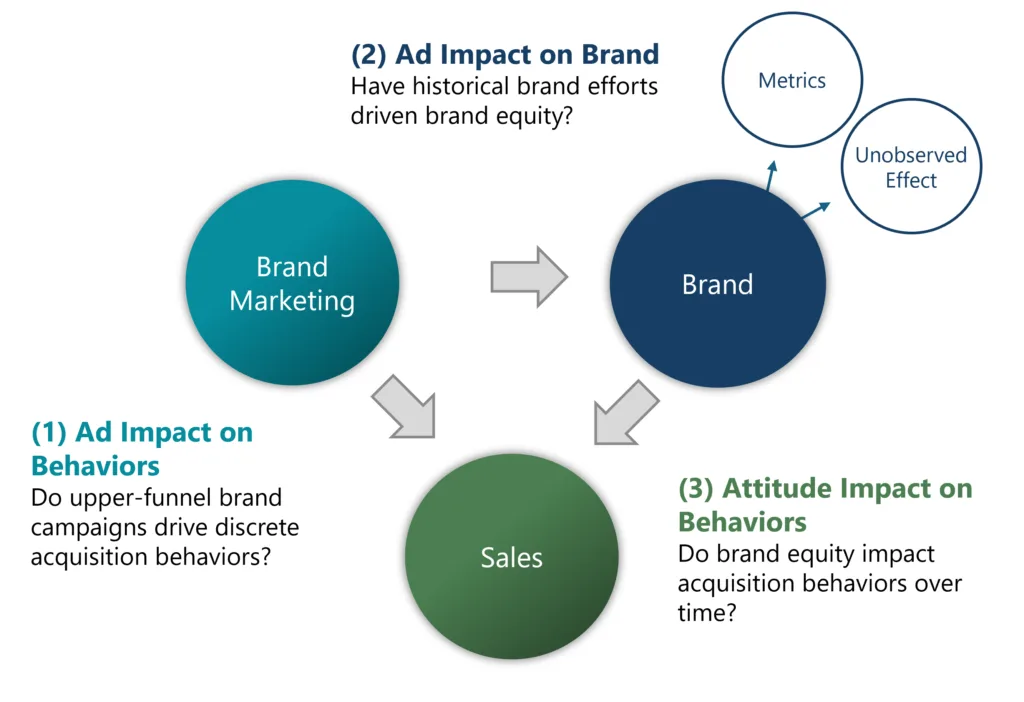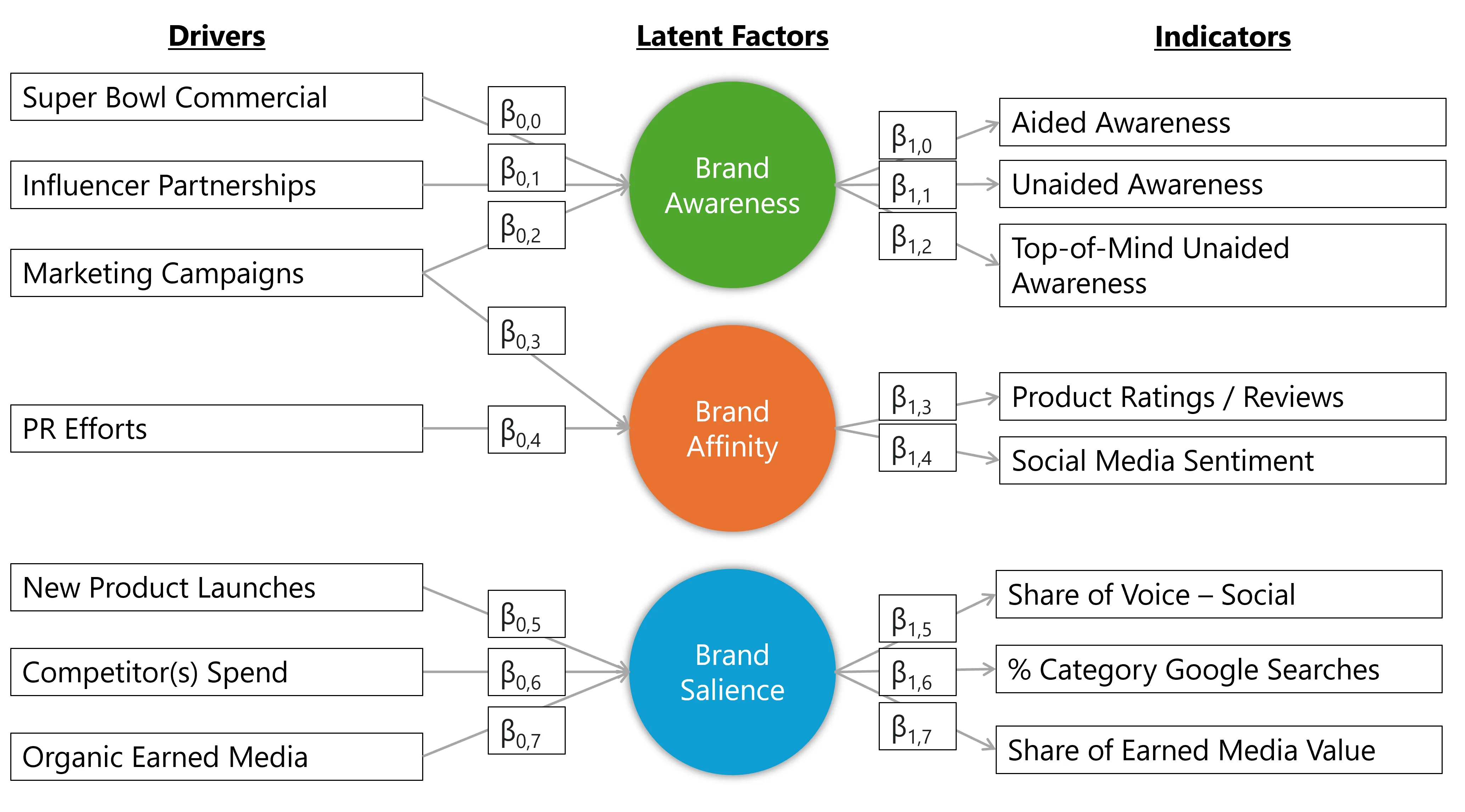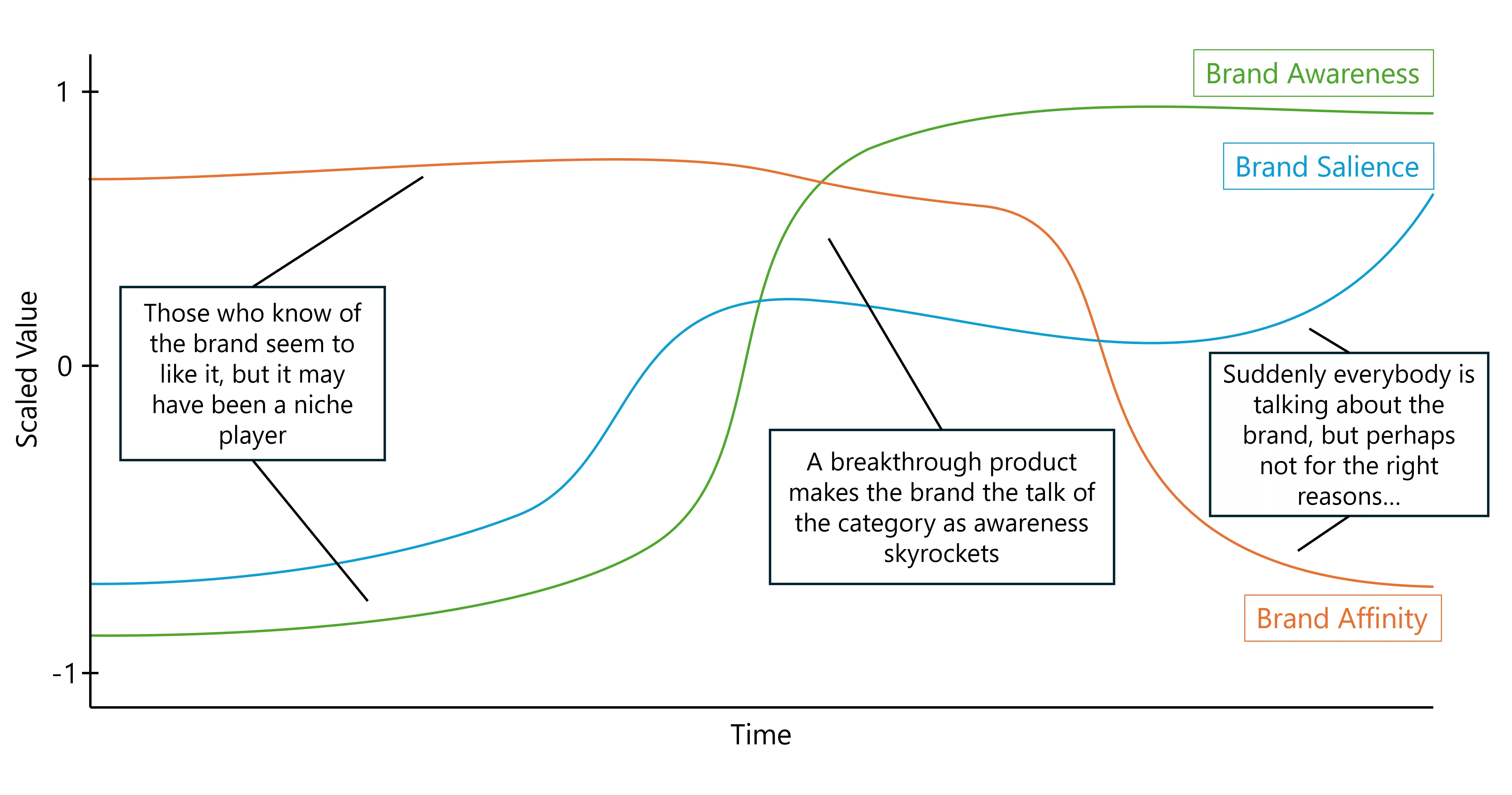A Data Science-Backed Approach to Brand Building
Any marketer will tell you that brand-building takes significant time, concerted effort, and major resources. Measuring that work, however, can feel like an altogether separate beast. Quantifying the impact of upper funnel efforts on eventual sales is an increasingly high priority for effective marketing teams—those seeking to avoid the measurement trap and balance out their marketing investments.
While Media Mix Models (MMM) are often the best tool for evaluating marketing effectiveness and avoiding last-touch bias, these advanced tools can struggle with the long-term and slowly compounding nature of brand-building. Inevitably, we reach a key question: “How do we take a multi-stage and data science-backed (read: econometric) approach to modeling a brand?”

Figure 1: Generalized multi-stage model
“Brand” as a Collection of Latent Factors
Let’s start with what we know: there is no single “brand equity” KPI that we can observe and track. There are certainly observable indicators of brand strength, things like awareness (be it aided or unaided), NPS, product ratings, repeat customer rates … the list goes on. And, on the other side of the equation, there are observable drivers of brand equity—this is anything that pushes the brand forward (or backward), things like earned media, competitor spend, celebrity partnerships, paid marketing campaigns … again, the list gets long in a hurry.
Once we have collected the relevant data and built a comprehensive list of our drivers and indicators, we can leverage an econometric technique called structural equation modeling to estimate the factor (or factors) in the “middle”—the unobservable thing that is driven by the drivers and indicated by the indicators—a latent factor. With a bit of data science wizardry, we can load these observable metrics against factors and review the strength of those relationships.
Choosing Brand Latent Factors
Again and again, we find that collecting indicators and drivers to load on a single factor (call it “brand equity”) simply doesn’t work. We’ll often generate strange coefficients with low confidence in our modeling outputs when using a single factor. There is no one-size-fits-all approach here, but with modeling iterations, we can start to think about a collection of brand factors that have distinct sets of drivers and indicators. And this is where things get interesting.
When aligning drivers and indicators to factors and selecting how many factors to model, we start a conversation between quantitative data science and qualitative marketing strategy. We collect a comprehensive data inventory, build a multifaceted “story of the brand” using key events and trends over time, and finally let the data tell us which aspects of our story seem to be resonating econometrically. This give and take will help crystallize our mental model and generate a set of latent factors to model on.
Here are some unobservable latent brand factors that might underpin our brand model:
- Brand Awareness
- Category Awareness
- Brand Affinity
- Brand Salience or Fame
- Perceived Quality
- Brand Loyalty

Figure 2: Illustrative map of SEM results for brand latent factors
What Can We Learn from Modeling Brand?
Once we have a model that (a) loads econometrically with high confidence and (b) lines up with our intuition (our “priors”), we can chart these brand factors over time and begin to investigate causal relationships or key moments in a brand’s timeline.

Figure 3: Illustrative brand journey—not all factors move together
As we incorporate brand factors into a holistic marketing effectiveness model by layering on other components (i.e., modeling sales response, controlling for seasonality and macro factors, etc.), we can start to ask the juicy questions that brought us to this exercise in the first place, things like:
- Which brand factor(s) align with the sales trend?
- Which marketing channels drive which brand factors?
- How much of a time lag is there between movements in brand factors and the resulting sales impact?
- How much of a halo effect do our brand factors have on the effectiveness of lower funnel channels, like paid search?
- How do strategic initiatives impact our brand factors, and are we moving the ones that matter?
- In sum, what should we—as a marketing organization—be prioritizing?
Delivering Brand Success
A brand is a tricky concept to put a number on, but doing so is exceptionally powerful in a multi-stage model of marketing effectiveness. Using structural equation modeling with the right drivers, indicators, and latent factors, we can take a data science-backed approach and incorporate a cohesive brand story into a holistic effectiveness model.
Learn more and get started
We would love to chat more about our approach to brand measurement and understand your challenges.
Complete the form below to schedule a meeting with our Chief Analytics Officer.



